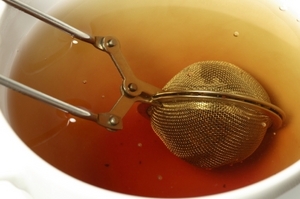The Meiji restoration had a deep impact on Japan. The restoration, besides restoring power to the Meiji emperor (which, in reality, it just transferred power from the Tokugawa shogun to the new oligarchy of the daimyo that defeated him) changed Japanese society.
“The salient characteristic of Japan’s mid-nineteenth century transitional period is the demise of the Samurai, in terms of lives lost and ride and status demolished. The danger of Samurai uprisings preoccupied the government during its first decade.”(The Encyclopedia of Asian history 526) As part of Japan’s rush to modernize and catch up with the western world, the class system was abolished. Most notably among the classes erased were the Samurai. These Samurai had held high positions, and were earning high stipends of koku (a quantity of rice that was enough to feed a person for a year, most Samurai were paid with koku [the koku measurement was also abolished during the Meiji period]). However, after the restoration, the former Samurai were now ordinary citizens. Most were purged from the high positions they formerly held, and were no longer earning the wages they used to. Thus, many samurai would rebel. These Samurai uprisings were of a small scale most of the time. The most noted Samurai rebellion was the Satsuma Rebellion led by Saigo Takamori. While Siago Takamori had killed himself after losing a seven month battle, Samurai still loyal to him continued to cause trouble. In the spring of 1878, seven Samurai, avenging the death of Saigo Takamori, assassinated statesman Okubo Toshimichi.
Peasants were also discontent. In the last years of Tokugawa rule, there was an increase in peasant rebellions, which continued into the Meiji era. “Between 1869 and 1874 they averaged thirty each year. In one of the longest, in 1876 a riotous army of 10,000 farmers began to burn down government offices and bank buildings in the Mie area east of Osaka” (Bolitho, Harold 45) While there were people who didn’t like the new Meiji government, the majority was pleased.
The reason the Meiji restoration took place is due to the western powers. When the daimyo received news about the various islands in south Asia falling to Brittan and other western powers, they did not worry until the “black ships” arrived. When the Tokgawa shogun realized they were technologically outclassed by the western nations, he agreed to things that put the west at an advantage, and Japan at a disadvantage. Many leaders were angered at the move and fearful that Japan would befall the same fate as many other Asian countries. Thus, the Meiji emperor was “restored” to power. “The new leaders, who in the decades before the Restoration had used words such as ‘plot’ in their letters, now had to build responsibly. All the acts that followed the coup were based on the realistic decision that Japan must not antagonize the Western powers. This first principle in Japanese foreign policy guided the conduct of Japanese leadership to the 1930s.” However, after the revolution Japan still had to build up quickly, yet without angering the Western powers. If Japan did something to anger the west (before building the country up to western standards), they knew it would be the end of their nation.
“One answer is found in the Meiji Restoration itself. This political revolution “restored” the emperor to power, but he did not rule directly. He was expected to accept the advice of the group that had overthrown the shôgun, and it was from this group that a small number of ambitious, able, and patriotic young men from the lower ranks of the samurai emerged to take control and establish the new political system. At first, their only strength was that the emperor accepted their advice and several powerful feudal domains provided military support. They moved quickly, however, to build their own military and economic control. By July 1869 the feudal lords had been requested to give up their domains, and in 1871 these domains were abolished and transformed into prefectures of a unified central state.”(Columbia University, http://afe.easia.columbia.edu/japan/japanworkbook/modernhist/meiji.html ) The Meiji emperor for the most part was a puppet. While the Meiji Restoration was to restore power to the Meiji emperor, in reality it was a way for various Japanese aristocrats to gain power. He had some influence; however, most things were controlled by the “Genro”. The Genro was an oligarchy of the daimyo who led the Meiji Revolution.
In closing, the Impact of the Meiji Restoration had a humongous effect on Japan. All spectrums of Japanese life were affected. Politics, society, technology, and world view were just some of the facets of Japanese life changed forever by the Meiji Restoration.
Bibliography of “Impact of the Meiji Restoration”.
Akita, George K. The Encyclopedia of Asian History. Asia Society, Charles Scribner’s Sons, 1988.
Columbia University, East Asian Curriculum Project Contemporary Japan: A Teaching Workbook. http://afe.easia.columbia.edu/japan/japanworkbook/modernhist/meiji.html
Bolitho, Harold Meiji Japan. Minneapolis, Lerner, 1980

